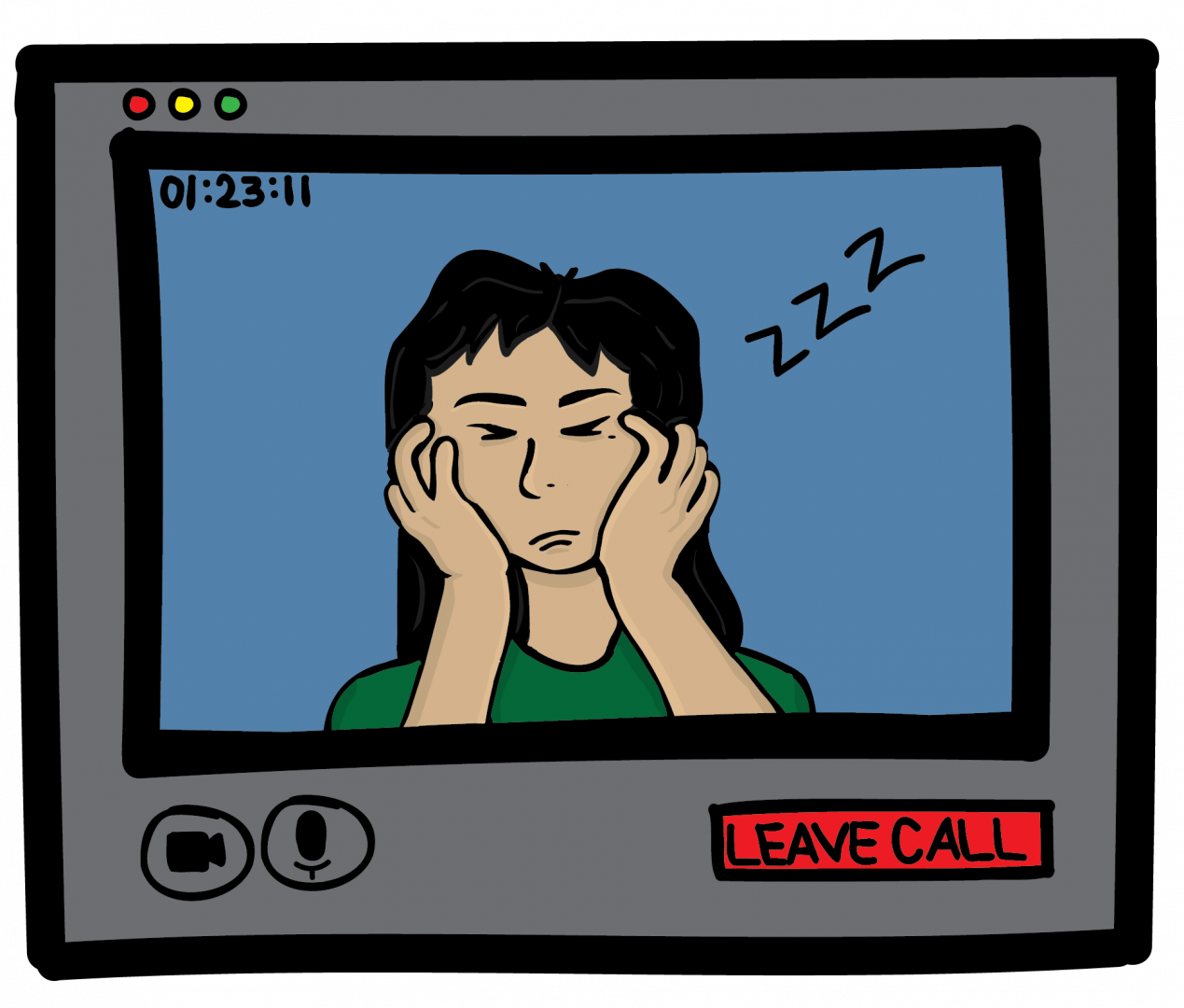Zoom — you either love it or hate it. Personally, I like staying in my room and not going to an in-person class. I get to lounge in the comfort of my own environment while doing schoolwork. However, the worst part of attending virtual classes is the Zoom fatigue.
Zoom fatigue, according to Psychiatric Times, is the feeling of burnout and tiredness linked to using video calls. Symptoms of Zoom fatigue include difficulty concentrating, fatigue and muscle tension, according to Healthline.
One reason Zoom can cause fatigue is because being on a video call requires more focus than in-person interactions, according to the BBC. Our mind needs to work harder to read non-verbal cues, according to Stanford News. For example, if a professor asks the class if we understand something, it isn’t as obvious that we’re saying yes with non-verbal cues, which causes us to work harder to receive these signals.
As someone who has long night classes that are often on Zoom, staying on camera for long periods of time is exhausting, too. Having many pairs of eyes staring at the screen makes me feel like I’m being constantly watched. I hesitate to do anything, such as sneeze or adjust my seating position, out of fear that everyone is looking at me.

Another issue with Zoom fatigue is eye strain. As previously mentioned, I have long night classes, and after class my eyes sometimes hurt. According to STLToday, staring at a screen can cause dry eyes, blurred vision and headaches, among other symptoms. While these effects are irritating, STLToday says they are not permanent.
One difference I have noticed between the classroom and Zoom is that in a normal setting, everyone is looking at the speaker or elsewhere. But on Zoom, everyone is looking at each other, leading to increased eye-contact.
Everyone also is looking at themselves, all of the time. In an in-person class, students obviously aren’t looking at themselves— they’re looking at the professor or their notebook or something else. But looking at themselves all the time in Zoom can make students feel self-conscious. I constantly fiddle with my hair or appearance and worry about what people may be looking at in my background.
While there is a way to hide one’s own video feed on Zoom so students don’t have to look at themselves, doing this may make some more self-conscious. Since they cannot see themselves, they may forget that their cameras are on.
Furthermore, in Zoom calls, we are expected to be in the same mindset as if we were in a classroom or workplace, according to Healthline. That means being focused and free of distractions. Usually in a classroom, these would be removed for us. But on Zoom, we’re in our own home or dorm. We’re surrounded by distractions and in an environment where we usually relax or unwind.
This can make paying attention on Zoom difficult. According to a survey covered by IBL News, many students interviewed found it hard to pay attention while in a Zoom class because they are not in an environment designed for working or because of distractions on the computer. I find it very easy to lose focus in Zoom because I am on a computer, where I also browse the Internet. Opening a browser and distracting yourself while the teacher is talking is way too tempting.
Zoom fatigue is not something professors can simply ignore. If video conferencing becomes the new educational norm, professors need to be aware of the effects Zoom can have on our focus. I do not think Zoom is going to go away after this pandemic is over, so teachers need to understand potential side effects of attending virtual classes.
Professors can be more mindful of Zoom fatigue by understanding why students may need to turn off their cameras part of the time, such as for five to ten minutes to take breaks from staring at their screen. If students need to take a break from looking at themselves, professors should allow that. Just as we would take breaks from learning when in the classroom, we also should take breaks on Zoom.
I understand that professors may think we are leaving the discussion or not paying attention, but students do need time away from looking at themselves and a bright screen. Staring at ourselves and 20 other faces for up to three hours is exhausting. While one student may turn off his or her camera to goof off, another may be taking a necessary break. If we are going to be online for another semester, or continue using Zoom after the pandemic, we need to be mindful of Zoom fatigue and its effects.






